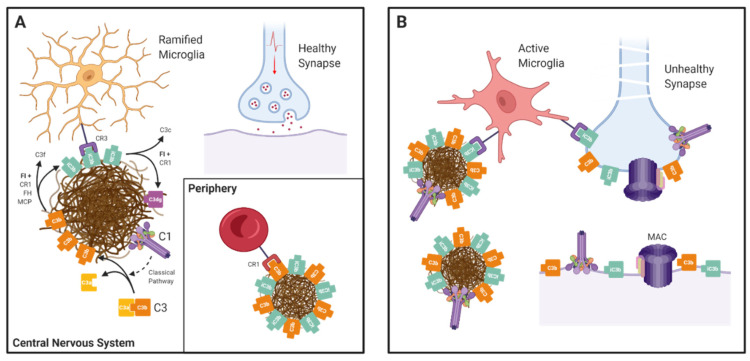Figure 2.
The Janus-faced nature of complement in AD: (A) In the central nervous system complement components and activation products (C1q/r/s and C3b) are deposited on amyloid plaques. C3b is converted to iC3b by Factor I (FI) with cofactor activity from CR1, Factor H, or MCP. iC3b binds to phagocytic receptor CR3 (an integrin dimer comprising CD11b and CD18 chains) on the surface of microglia, enabling plaque clearance. iC3b is further broken down by FI and CR1 into inactive C3dg. In the periphery, CR1 binds to C3b-opsonised amyloid aggregates and transports them to the liver for destruction in a process called “immune complex clearance”. (B) Complement dysregulation tips the balance towards destruction. In the absence of proper CR1 function, complement components accumulate, resulting in cell activation or damage. Complement is also involved in pathological synapse loss in AD. C1 binds to a poorly defined receptor on synapses and triggers classical pathway activation, resulting in C3b opsonisation and subsequent phagocytosis by activated microglia.

